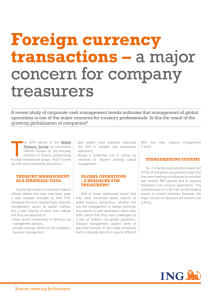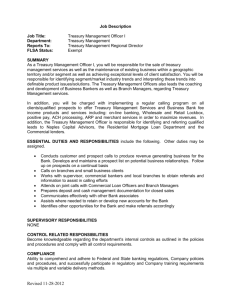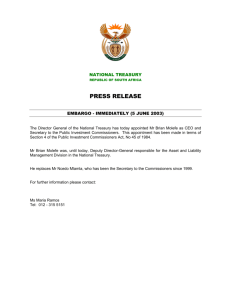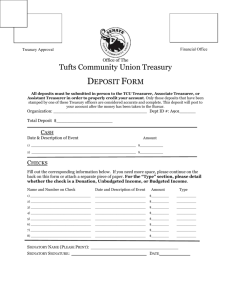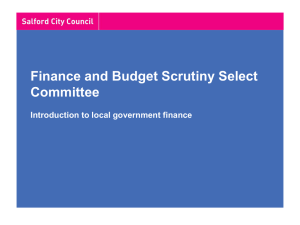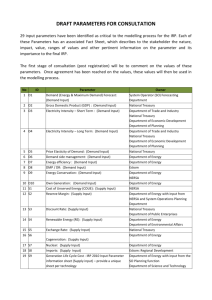Customer Identification Programs for Financial Institutions, 7/3/03
advertisement
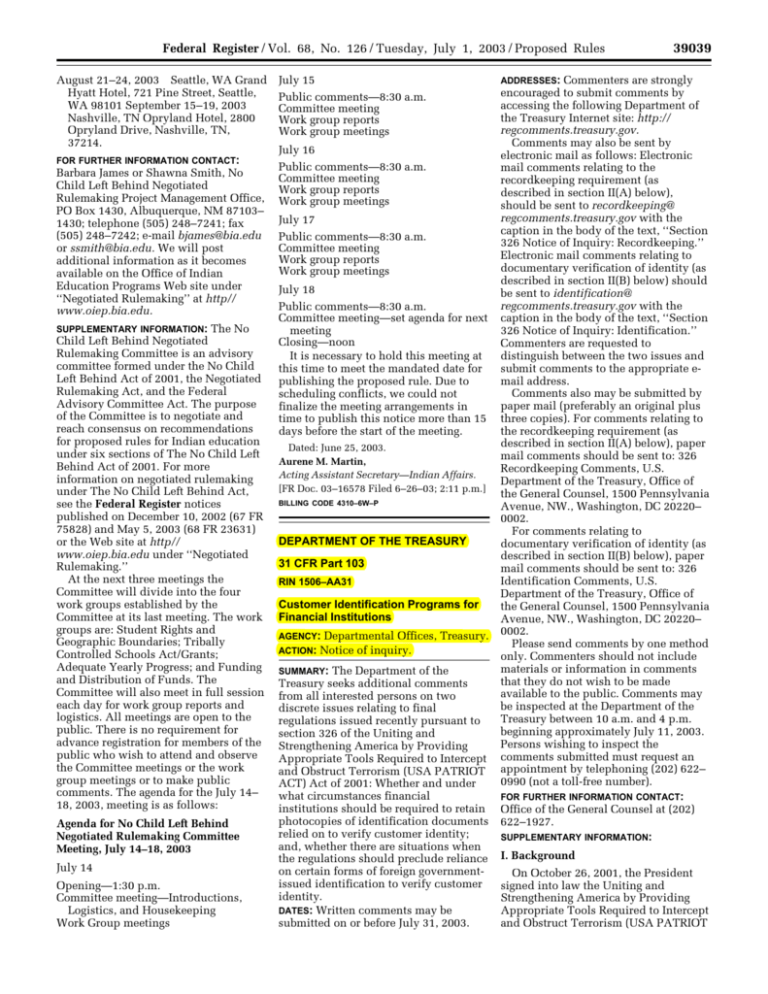
Federal Register / Vol. 68, No. 126 / Tuesday, July 1, 2003 / Proposed Rules August 21–24, 2003 Seattle, WA Grand Hyatt Hotel, 721 Pine Street, Seattle, WA 98101 September 15–19, 2003 Nashville, TN Opryland Hotel, 2800 Opryland Drive, Nashville, TN, 37214. FOR FURTHER INFORMATION CONTACT: Barbara James or Shawna Smith, No Child Left Behind Negotiated Rulemaking Project Management Office, PO Box 1430, Albuquerque, NM 87103– 1430; telephone (505) 248–7241; fax (505) 248–7242; e-mail bjames@bia.edu or ssmith@bia.edu. We will post additional information as it becomes available on the Office of Indian Education Programs Web site under ‘‘Negotiated Rulemaking’’ at http// www.oiep.bia.edu. The No Child Left Behind Negotiated Rulemaking Committee is an advisory committee formed under the No Child Left Behind Act of 2001, the Negotiated Rulemaking Act, and the Federal Advisory Committee Act. The purpose of the Committee is to negotiate and reach consensus on recommendations for proposed rules for Indian education under six sections of The No Child Left Behind Act of 2001. For more information on negotiated rulemaking under The No Child Left Behind Act, see the Federal Register notices published on December 10, 2002 (67 FR 75828) and May 5, 2003 (68 FR 23631) or the Web site at http// www.oiep.bia.edu under ‘‘Negotiated Rulemaking.’’ At the next three meetings the Committee will divide into the four work groups established by the Committee at its last meeting. The work groups are: Student Rights and Geographic Boundaries; Tribally Controlled Schools Act/Grants; Adequate Yearly Progress; and Funding and Distribution of Funds. The Committee will also meet in full session each day for work group reports and logistics. All meetings are open to the public. There is no requirement for advance registration for members of the public who wish to attend and observe the Committee meetings or the work group meetings or to make public comments. The agenda for the July 14– 18, 2003, meeting is as follows: SUPPLEMENTARY INFORMATION: Agenda for No Child Left Behind Negotiated Rulemaking Committee Meeting, July 14–18, 2003 July 14 Opening—1:30 p.m. Committee meeting—Introductions, Logistics, and Housekeeping Work Group meetings VerDate Jan<31>2003 17:18 Jun 30, 2003 Jkt 200001 July 15 Public comments—8:30 a.m. Committee meeting Work group reports Work group meetings July 16 Public comments—8:30 a.m. Committee meeting Work group reports Work group meetings July 17 Public comments—8:30 a.m. Committee meeting Work group reports Work group meetings July 18 Public comments—8:30 a.m. Committee meeting—set agenda for next meeting Closing—noon It is necessary to hold this meeting at this time to meet the mandated date for publishing the proposed rule. Due to scheduling conflicts, we could not finalize the meeting arrangements in time to publish this notice more than 15 days before the start of the meeting. Dated: June 25, 2003. Aurene M. Martin, Acting Assistant Secretary—Indian Affairs. [FR Doc. 03–16578 Filed 6–26–03; 2:11 p.m.] BILLING CODE 4310–6W–P DEPARTMENT OF THE TREASURY 31 CFR Part 103 RIN 1506–AA31 Customer Identification Programs for Financial Institutions Departmental Offices, Treasury. Notice of inquiry. AGENCY: ACTION: SUMMARY: The Department of the Treasury seeks additional comments from all interested persons on two discrete issues relating to final regulations issued recently pursuant to section 326 of the Uniting and Strengthening America by Providing Appropriate Tools Required to Intercept and Obstruct Terrorism (USA PATRIOT ACT) Act of 2001: Whether and under what circumstances financial institutions should be required to retain photocopies of identification documents relied on to verify customer identity; and, whether there are situations when the regulations should preclude reliance on certain forms of foreign governmentissued identification to verify customer identity. DATES: Written comments may be submitted on or before July 31, 2003. PO 00000 Frm 00013 Fmt 4702 Sfmt 4702 39039 ADDRESSES: Commenters are strongly encouraged to submit comments by accessing the following Department of the Treasury Internet site: http:// regcomments.treasury.gov. Comments may also be sent by electronic mail as follows: Electronic mail comments relating to the recordkeeping requirement (as described in section II(A) below), should be sent to recordkeeping@ regcomments.treasury.gov with the caption in the body of the text, ‘‘Section 326 Notice of Inquiry: Recordkeeping.’’ Electronic mail comments relating to documentary verification of identity (as described in section II(B) below) should be sent to identification@ regcomments.treasury.gov with the caption in the body of the text, ‘‘Section 326 Notice of Inquiry: Identification.’’ Commenters are requested to distinguish between the two issues and submit comments to the appropriate email address. Comments also may be submitted by paper mail (preferably an original plus three copies). For comments relating to the recordkeeping requirement (as described in section II(A) below), paper mail comments should be sent to: 326 Recordkeeping Comments, U.S. Department of the Treasury, Office of the General Counsel, 1500 Pennsylvania Avenue, NW., Washington, DC 20220– 0002. For comments relating to documentary verification of identity (as described in section II(B) below), paper mail comments should be sent to: 326 Identification Comments, U.S. Department of the Treasury, Office of the General Counsel, 1500 Pennsylvania Avenue, NW., Washington, DC 20220– 0002. Please send comments by one method only. Commenters should not include materials or information in comments that they do not wish to be made available to the public. Comments may be inspected at the Department of the Treasury between 10 a.m. and 4 p.m. beginning approximately July 11, 2003. Persons wishing to inspect the comments submitted must request an appointment by telephoning (202) 622– 0990 (not a toll-free number). FOR FURTHER INFORMATION CONTACT: Office of the General Counsel at (202) 622–1927. SUPPLEMENTARY INFORMATION: I. Background On October 26, 2001, the President signed into law the Uniting and Strengthening America by Providing Appropriate Tools Required to Intercept and Obstruct Terrorism (USA PATRIOT E:\FR\FM\01JYP1.SGM 01JYP1 39040 Federal Register / Vol. 68, No. 126 / Tuesday, July 1, 2003 / Proposed Rules ACT) Act of 2001 (Pub. L. 107–56) (the Act). Title III of the Act made a number of amendments to the anti-money laundering provisions of the Bank Secrecy Act (BSA), which are codified in subchapter II of chapter 53 of title 31, United States Code.1 These amendments are intended to promote the prevention, detection, and prosecution of money laundering and the financing of terrorism. Section 326 of the Act added a new subsection (l) to 31 U.S.C. 5318 of the BSA that requires the Secretary of the Treasury (Secretary) to prescribe regulations ‘‘setting forth the minimum standards for financial institutions and their customers regarding the identity of the customer that shall apply in connection with the opening of an account at a financial institution.’’ For any financial institution engaged in financial activities described in section 4(k) of the Bank Holding Company Act of 1956 (section 4(k) institutions), the Secretary is required to prescribe the regulations issued under section 326 jointly with the Board of Governors of the Federal Reserve System, the Federal Deposit Insurance Corporation, the Office of the Comptroller of the Currency, the Office of Thrift Supervision, the National Credit Union Administration, the Securities and Exchange Commission, and the Commodity Futures Trading Commission (collectively, the federal functional regulators). Section 326 of the Act provides that the regulations must require, at a minimum, financial institutions to implement reasonable procedures for (1) verifying the identity of any person seeking to open an account, to the extent reasonable and practicable; (2) maintaining records of the information used to verify the person’s identity, including name, address, and other identifying information; and (3) determining whether the person appears on any lists of known or suspected terrorists or terrorist organizations provided to the financial institution by any government agency. In prescribing these regulations, section 326 of the Act directs the Secretary to take into consideration the various types of accounts maintained by various types of financial institutions, the various methods of opening accounts, and the various types of identifying information available. 1 Regulations implementing the BSA appear at 31 CFR part 103. The authority of the Secretary of the Treasury to administer the BSA and its implementing regulations has been delegated to the Director of the Financial Crimes Enforcement Network (FinCEN). VerDate Jan<31>2003 17:18 Jun 30, 2003 Jkt 200001 On May 9, 2003, the Department of the Treasury (Treasury), through the Financial Crimes Enforcement Network (FinCEN), together with the federal functional regulators, published final rules implementing section 326.2 These regulations require Federally regulated banks, securities broker-dealers, mutual funds, and futures commission merchants and introducing brokers to establish reasonable procedures for the identification and verification of new accountholders. Although separate rules were issued for the various types of financial institutions, the substantive requirements of the rules are intended to be the same. The final rules require financial institutions to develop a customer identification program (‘‘CIP’’) that includes risk-based procedures for verifying the identity of each customer to the extent reasonable and practicable. Among other things, the CIP must enable the financial institution to form a reasonable belief that it knows the true identity of the customer. Financial institutions must develop their CIP to minimize the relevant risks, including those presented by the types of accounts maintained by the institution, the various methods of opening accounts, the types of identifying information available, as well as the financial institution’s size, location, and type of business or customer base. The rules implementing section 326 became effective on June 9, 2003, although financial institutions have until October 1, 2003 to come into compliance. II. Request for Comments The CIP implemented pursuant to the section 326 final rules will form an integral part of a financial institution’s efforts to detect and prevent money laundering and the financing of terrorism. Moreover, the information collected and maintained by financial institutions is designed to provide an effective audit trail should an investigation be conducted. Since publishing the final regulations, concerns have been raised about two provisions relating to recordkeeping and the acceptance of certain forms of identification. As a result of these concerns, and as part of Treasury’s continuing efforts to ensure that BSA regulations strike the appropriate balance between the burdens imposed on the financial system and the prevention of money laundering and the 2 See 68 FR 25089–25162. In addition to the joint rules, FinCEN also issued separately a rule applicable to various state-chartered banks lacking a federal functional regulator. PO 00000 Frm 00014 Fmt 4702 Sfmt 4702 financing of terrorism, Treasury seeks additional input on the two provisions. A. Recordkeeping Requirement The final rules implementing section 326 permit financial institutions to verify customer identity through both documentary and non-documentary means. In proposed rules issued in July of 2002, Treasury and the federal functional regulators included a new requirement that, when a financial institution relies on a document—such as an identification card—to verify identity, the financial institution must make and maintain a photocopy of that document.3 Virtually all of the substantial number of comments relating to this provision were critical of the requirement.4 In light of these comments and the terms of section 326 of the Act, Treasury and the federal functional regulators eliminated the photocopy requirement in the final rule, instead requiring financial institutions to make and maintain a record of the description of any document upon which the financial institution relies to verify customer identity. The description must include the type of document, any identification number contained in the document, the place of issuance, and, if any, the date of issuance and expiration date. While financial institutions are not required to maintain photocopies of identification documents relied upon in all cases, Treasury has noted publicly that, so long as it is consistent with any applicable laws, financial institutions may want to retain a photocopy of identification documents in instances where risk factors are present. Treasury seeks additional comment on whether and under what circumstances financial institutions should be required to make and maintain photocopies of identification 3 See, e.g., 67 FR 48290, 48299 (proposed section 103.121(b)(3)(B)). 4 Commenters raised several arguments against the photocopy requirement, including: (1) The difficulty and burden of storing and retrieving copies of documents; (2) the fact that many kinds of identification documents, particularly some new driver’s licenses, have security features that prevent them from being copied legibly; (3) the difficulty of safeguarding copies, which could facilitate identity theft; (4) the fact that this requirement would substantially deviate from current banking practice and would violate certain state laws; (5) the difficulty for banks offering credit card accounts through retailers, which require the customer to provide identifying documents at the point of sale, in complying with such a requirement, especially given the reduced risks of money-laundering and the financing of terrorism through retail store credit cards; and (6) the potential for claims of unlawful discrimination, especially since the banking regulators have discouraged the practice of retaining photocopies when extending credit. E:\FR\FM\01JYP1.SGM 01JYP1 Federal Register / Vol. 68, No. 126 / Tuesday, July 1, 2003 / Proposed Rules documents used to verify the identity of customers. In particular: 1. Should the regulations require financial institutions to make and maintain a photocopy of identification documents upon which the financial institution relies to verify identity in all cases? 2. Should the regulations identify specific instances in which photocopies of documents relied upon must be made and maintained? 3. Should the regulations provide guidance to financial institutions concerning risk factors indicating when photocopying identification documents relied upon may be appropriate? The views of law enforcement, the industry, and others are sought, even if such views have been expressed previously in connection with the proposed rulemakings. This inquiry focuses on the recordkeeping requirements when a financial institution relies on documents to verify identity. B. Documentary Verification of the Identity of Foreign Individuals Under the risk-based approach of both the proposed and final rules, to the extent documents are used, financial institutions are given some discretion to determine which documentary forms of identification may be used to verify the identity of foreign individuals who seek to open an account. First, the final rules require financial institutions to obtain an identification number from all customers. For a non-U.S. person, an institution must obtain one or more of the following: a taxpayer identification number (social security number, individual taxpayer identification number, or employer identification number); passport number and country of issuance; alien identification card number; or number and country of issuance of any other governmentissued document evidencing nationality or residence and bearing a photograph or similar safeguard. Noting the absence of a uniform, standard identification number that non-U.S. persons could provide to financial institutions,5 Treasury and the federal functional regulators permitted financial institutions to choose among a variety of identification numbers that it may accept from a non-U.S. person, provided that the identifying information the institution accepts must permit the institution to form a reasonable belief 5 Treasury previously issued a report to Congress discussing the absence of a single identification number for non-U.S. persons. See Treasury Department, ‘‘A Report to Congress in Accordance with Section 326(b) of the USA PATRIOT Act,’’ October 21, 2002. VerDate Jan<31>2003 17:18 Jun 30, 2003 Jkt 200001 that it knows the true identity of the customer. Second, financial institutions must set forth the types of documentary identification that they will accept to verify identity. Financial institutions are encouraged to use multiple forms of identification to minimize risks. The final rules provide an illustrative list of identification documents that may be used. For an individual, these may include an unexpired governmentissued identification evidencing nationality or residence and bearing a photograph or similar safeguard, such as a driver’s license or passport. Treasury and the federal functional regulators emphasized that the final rules neither endorsed nor prohibited a financial institution’s acceptance of particular types of identification documents issued by foreign governments. Instead, a financial institution must decide for itself, based upon consideration of the appropriate risk factors, whether the information presented by a customer is reliable. Ensuring the appropriate identification of all persons opening accounts at financial institutions, including non-U.S. citizens, is a significant goal of the final regulations. Therefore, Treasury seeks additional comment on whether there are situations in which the regulations should preclude reliance on certain forms of foreign government-issued identification to verify customer identity. The regulations presently rely on financial institutions to determine which forms of foreign-issued identification to accept and under what circumstances, in light of the risks associated with each form of identification. 1. Should the regulations preclude financial institutions’ reliance on certain forms of identification issued by certain foreign governments? 2. Should the regulations require financial institutions to obtain a passport number from all customers who are non-U.S. citizens? a. What are the anticipated effects on non-U.S. citizens in the United States who are not required to have a passport? b. What are the anticipated effects on non-U.S. citizens who open accounts from abroad, and thus are not required to have a passport? 3. Is there sufficient empirical information to enable Treasury to assess the utility of the various forms of foreign-issued identification for purposes of accurately identifying the holder? 4. What would the impact be on the use of the conventional financial system if financial institutions were prohibited PO 00000 Frm 00015 Fmt 4702 Sfmt 4702 39041 from accepting certain forms of government-issued identification? The views of law enforcement, the industry, and others are sought, even if such views have been expressed previously in connection with the proposed rulemakings. The purpose of this Notice of Inquiry is to solicit further comment on the two issues outlined above and to enhance the administrative record. Only after considering all comments received in response to this notice of inquiry will Treasury determine whether to discuss with the federal functional regulators if it would be appropriate to jointly propose amendments to the final rules published on May 9, 2003, through a notice of proposed rulemaking. Financial institutions covered by the final rules are reminded of their obligation to be in compliance with the final rules by October 1, 2003. III. Procedural Requirements This document has been reviewed by the Office of Management and Budget as a significant regulatory action under Executive Order 12866. Dated: June 25, 2003. David D. Aufhauser, General Counsel. [FR Doc. 03–16562 Filed 6–30–03; 8:45 am] BILLING CODE 4810–25–P ENVIRONMENTAL PROTECTION AGENCY 40 CFR Part 52 [TX–122–1–7613; FRL–7520–8] Determination of Nonattainment as of November 15, 1996, and November 15, 1999, and Reclassification of the Beaumont/Port Arthur Ozone Nonattainment Area; State of Texas; Extension of Comment Period AGENCY: Environmental Protection Agency (EPA). ACTION: Proposed rule; extension of comment period. SUMMARY: The United States Environmental Protection Agency is extending the comment period for a proposed action published Thursday, June 19, 2003 (68 FR 36756). On June 19, 2003, the EPA: proposed to withdraw our final approval of BPA’s 2007 attainment demonstration State Implementation Plan (SIP), the motor vehicle emission budget (MVEB), the mid-course review commitment (MCR), our finding that BPA implemented all RACM; and withdrew the extension of the attainment date to 2007 and our E:\FR\FM\01JYP1.SGM 01JYP1
